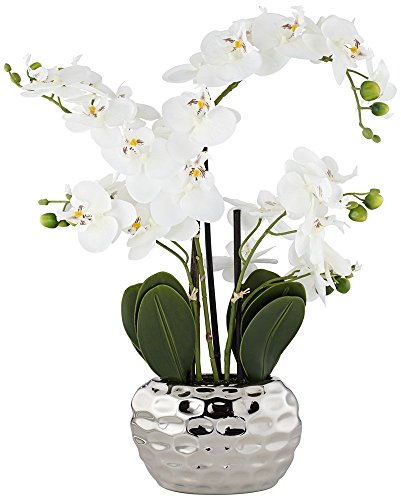Candace, the old stuff is no longer manufactured.
Lance, let me see if I can wade through your series of questions/comments:
I believe more wicking is better, as it provides a more uniform environment throughout the pot.
The appearance of droplets between medium particles and the pot wall does not necessarily indicate the presence of a surface film on the medium. Those "wet spots" are simply places where surface tension is holding water droplets, which happens between particles, and between particles and the pot wall with all types of media.
Long-term "chemistry issues" arise when the medium absorbs, but does not re-release chemicals freely. My guess is that there is nothing that has a truly 100% in-and-out set of properties. If anything, the new PrimeAgra is better at releasing the absorbed solution, so should go longer before issues may appear, if at all. The maintenance of a constant moisture supply keeps the ions in solution, hence more mobile, so the buildup is lessened. it's when media are allowed to dry between waterings that the problem really comes to a fore. (I have a paph still in the same pot of "old" material since 2000, and I see no issues.)
PrimeAgra is a 100% ceramic product, and by itself is inert. I don't know for sure, but I can think of a couple of potential sources of the "free" material in the virgin product:
- When the pellets are done with their firing cycle, they are quenched to rapidly cool them and to keep down dust. It is doubtful they use pure water to do so.
- When manufacturing any clay body, binders are used to shape and hold the particles together before firing. Those binders can be pretty complex formulations of organic- and inorganic compounds. If properly fired (time, temperature, atmosphere), the organics are decomposed and the inorganics should oxidize, but the process may not be complete throughout each and every particle and even within a particle, so there might be some extractable residues.
For what it's worth, I have not observed any issues related to that, other than appearance, although I'll acknowledge that it did concern me at first.
I'm not sure exactly what you're asking about the fertilizer concentration. Bill Argo, the inventor of the "MSU" formula, recommended 100-150 ppm N; I shoot for the middle of the range. The fertilizer bag label gives the EC contribution of the fertilizer at various concentrations. By comparing my TDS meter readings for a known conductivity standard to that of a known fertilizer solution (hence a known N concentration), I developed a calibration curve. At that point I can use the TDS meters to manage the concentration, but shoot for the "corrected" values, not the true values.
I had forgotten about the rash of PC problems! I lost a bunch of emails then, among other stuff. If that's when Blake tried contacting me, it's no wonder I appear to have ignored him! In his shoes, I'd have been pissed too.
I agree that sales do not directly correlate to value, but repeat sales usually
are.
Without knowing all of the details, I would not venture a guess as to why Blake's plants died. It is just hard for me to imagine that simply switching the medium would have such an impact, as I have not seen any such problems, nor heard of them from anyone else using the stuff. I have planted tropicals and herbs in the stuff straight from the bag with no soaking or rinsing, and they have shown no problems. In non-s/h mode, I have done the same with catts and encyclias - again, with no issues - so it seems doubtful that there is a "toxicity" issue there. Last August I repotted almost 1000 plants into the new stuff, some from organic media, some from old PrimeAgra, and some from other experiments, and I have not had a lick of trouble.




































